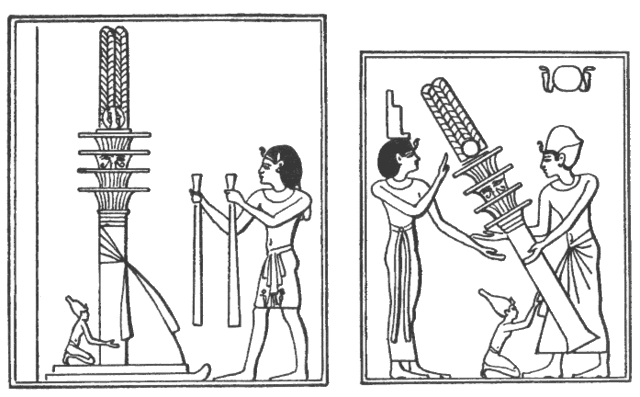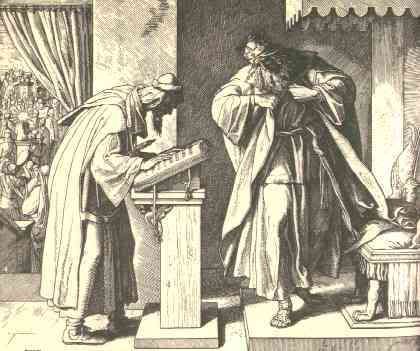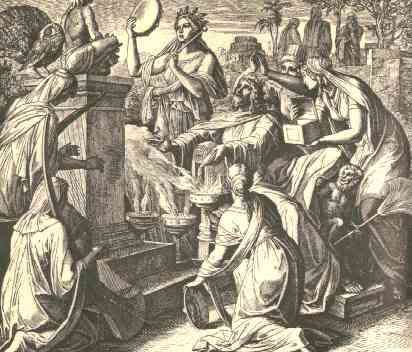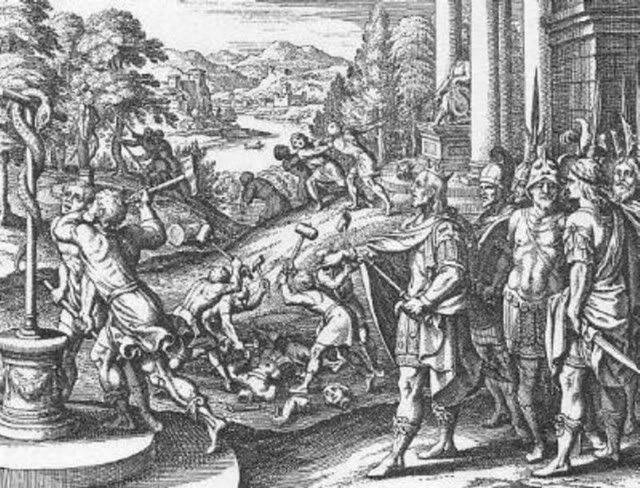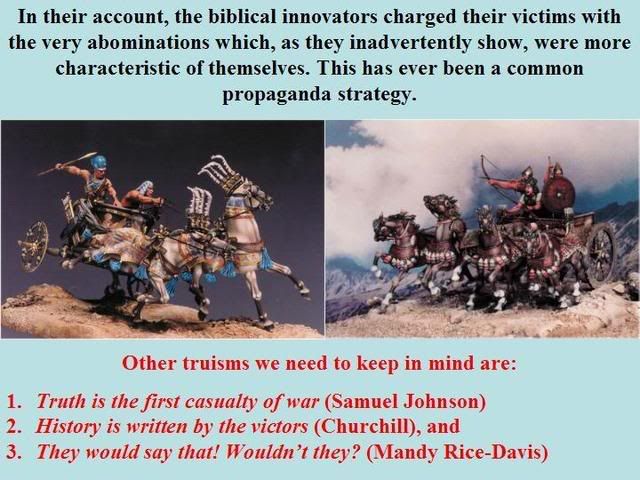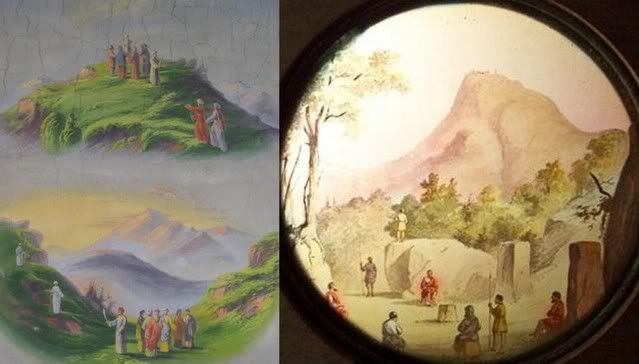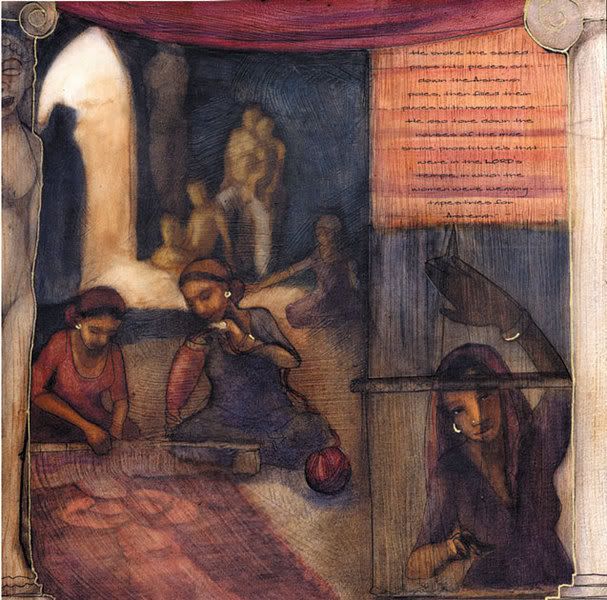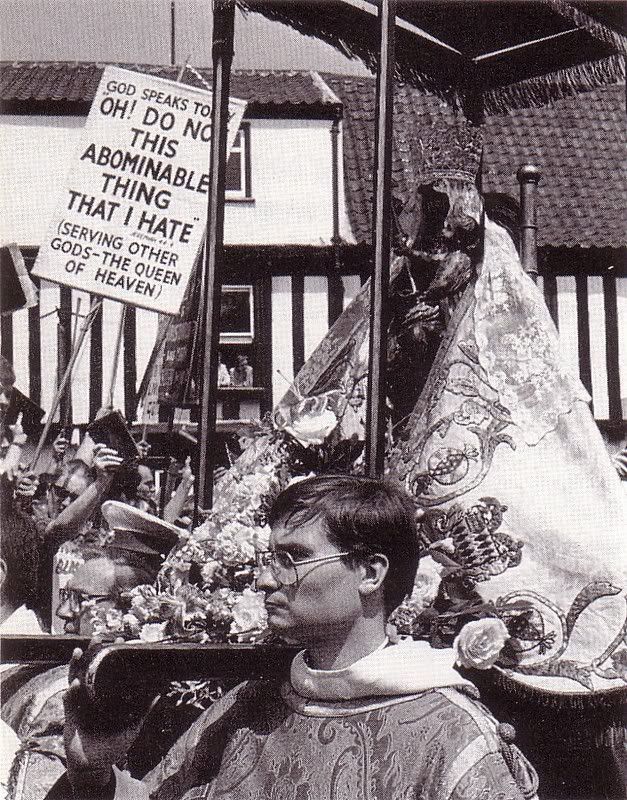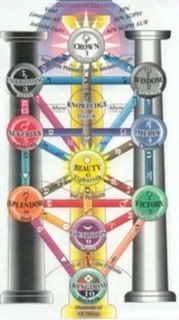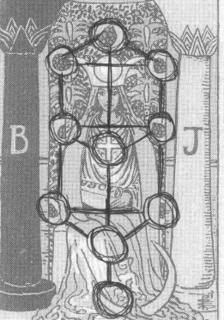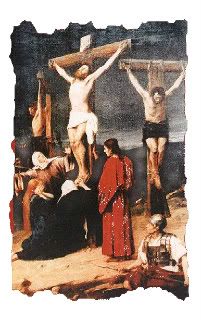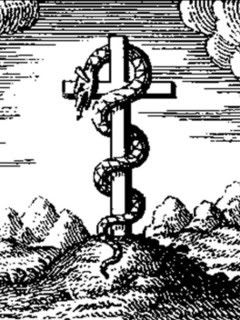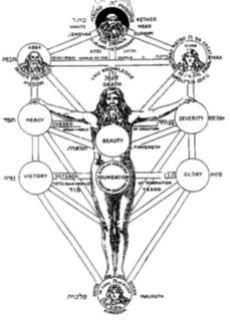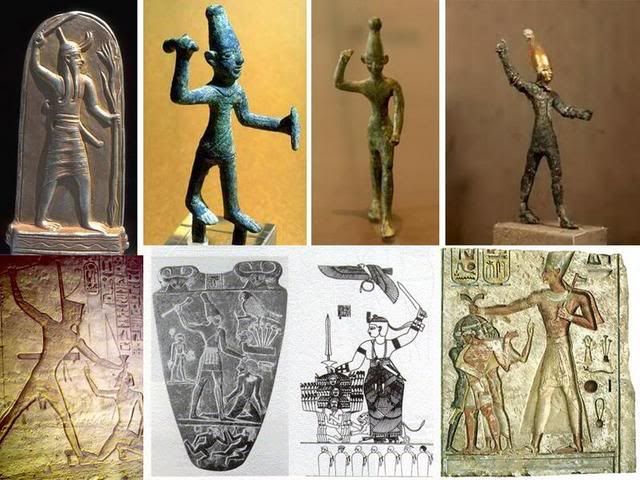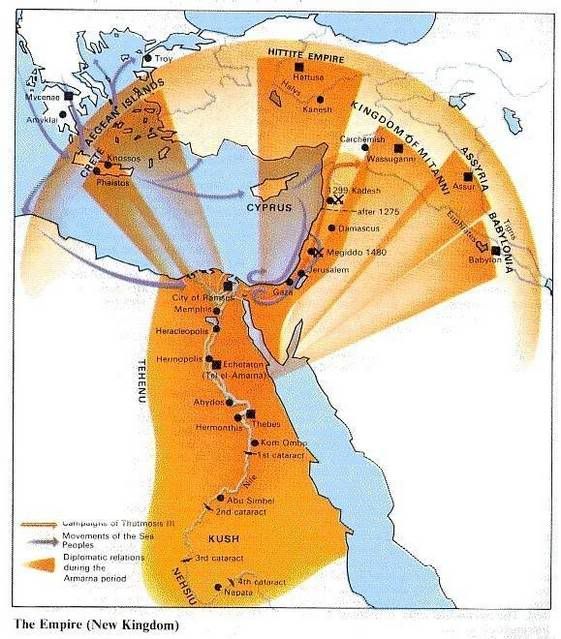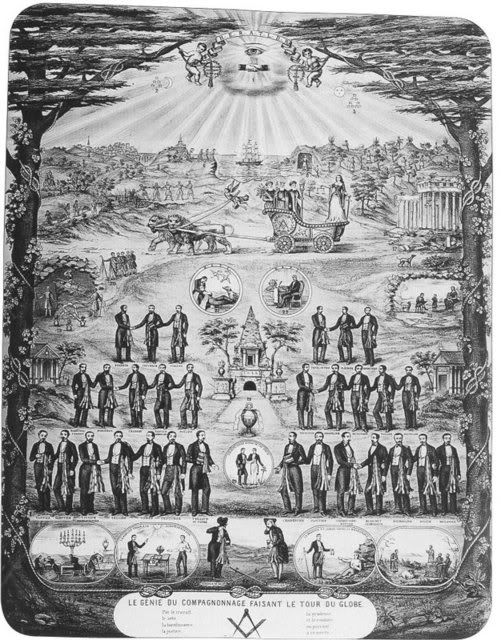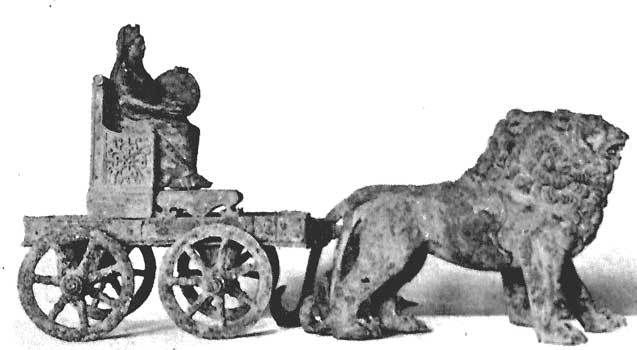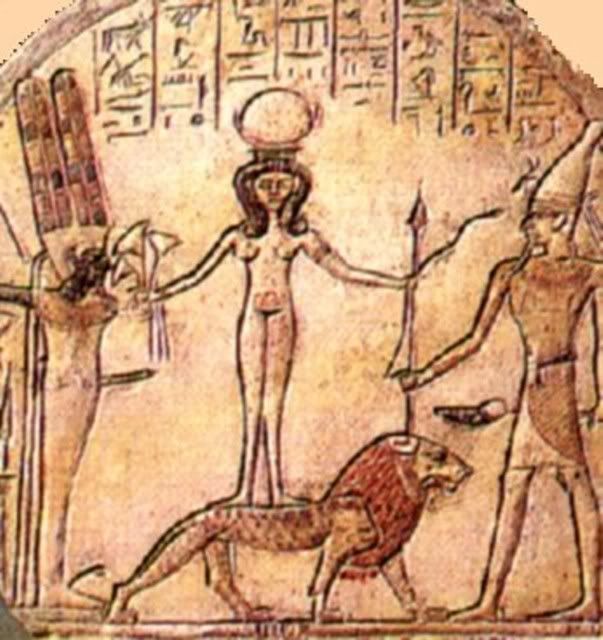|
|
Post by Tamrin on Jul 14, 2008 7:01:09 GMT 10
Desaguliers' CodeBy Philip Carter To avoid distraction, to comment on this thread please do so on the appropriate thread, under Topics. BackgroundAs Leo Zanelli tells us in, A Pragmatic Masonic History, Freemasonry is not a seamless continuation of any one tradition. Rather, it is a novel gathering together of two or more disparate strands by the Rev. Drs. Desaguliers, Anderson and others, in the early eighteenth century. The reorganisation of the first two degrees, with their emphasis on the Solomonic pillars (rather than the earlier Enochian pillars), additions to the Ancient Penalties (disposing of the remains), and the creation of the third, with its Hiramic Legend (rather than the earlier Noachidic Legend), were departures from the operative traditions of the founding lodges with their two degrees as revealed in the Early Masonic Catechisms, and did not correspond with what we now know of guild traditions around that time. George Maine tells us in, Desaguliers and The March of Militant Masonry ( emphasis added): For a time it looked as though even this newborn Masonry was to fail, but in 1719 Desaguliers was elected Grand Master, and he brought to Freemasonry the life it needed. He wrote most of its ritual. He brought to it his experimental philosophy, and gave to it a touch of Newtonian Christianity, a belief in Newton's God, now and for the first time, "The Great Artificer and Creator of the Universe." Perhaps the most characteristic innovation was his emphasis on an inclusive religious philosophy. Indeed, I suggest many of the ritual changes around that time become explicable by bearing this philosophy in mind. We read ( Constitutions of 1738): In ancient Times the Christian Masons were charged to comply with the Christian usages of each country where they travell’d or work’d. But Masonry being found in all Nations even of diverse Religions, they are now generally charged to adhere to that religion in which all men agree (leaving each brother to his own particular Opinion) that is to be good men and true, men of Honour and Honest, by whatever Names, religions, or Persuasions [sic] they may be distinguished This philosophy may be to do with many of the founders of the premier grand lodge—including the main mover and shaker, the Rev. Dr. John Theophilus Desaguliers, Fellow of the Royal Society, Third Grand Master and, it is said (Mackey, p.240), " The Father of Modern Speculative Masonry"—having been émigrés of Huguenot stock (Cryer, passim), for whom the Wars of Religion were still haunting memories, giving them cause to stress both caution and tolerance. The theory of Desaguliers' Code asserts that their ritual changes incorporate a lesson, barely concealed by analogy, stressing the dangers of religious bigotry. While their lesson centers upon a biblical example and demonstrates sympathy for those persecuted, the founding Brethren were essentially Christian and were certainly not proselytizing on behalf of a long extinct religion, as several anti-masons, picking up on the analogy have presumed. Rather they were cautioning against the very sort of bigotry these anti-masons respresent. As a Brother once exclaimed, “ The ‘Antis’ got it right, for all the wrong reasons!” Sources:Cryer, Neville Barker, 1995, ‘Huguenot Freemasons,’ in A Masonic Panorama, Selected Papers of the Reverend Neville Barker Cryer, Australian Masonic Research Council, Melbourne Mackey, Albert Gallatin, 1917 (org. 1874), Encyclopedia of Freemasonry and its Kindred Sciences Comprising the Whole Range of Arts, Sciences and Literature as Connected with the Institution, McClure Publishing, Philadelphia The Father of Modern Speculative Masonry, by Philip Carter A Pragmatic Masonic History, by Leo Zanelli Masonic Catechisms and Exposures, by Alain Bernheim 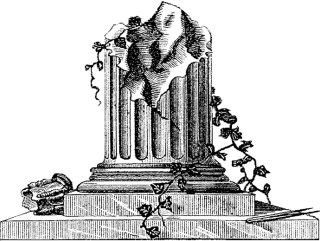 The Broken Pillar Since time immemorial, authorities have sought to dictate what people may or may not believe. Kings Hezekiah and Josiah butchered the worshippers of Asherah; the Jewish and Roman authorities crucified Jesus and persecuted his followers; Constantine sought to enforce ‘orthodoxy’; the Church made more martyrs than it gave; druids, witches, Manicheans, Cathars, Albigensians, Waldensians, Knights Templar. Protestants, Huguenots, Covenanters, Puritans, Freemasons, etc., all stood in opposition to the dominant paradigm of their day and, in doing so, all suffered for their convictions. Salacious ‘abominations,’ such as devil worship, sodomy and child sacrifice, were tediously alleged; followers were murdered; and books were burnt. Some streams merged (and, ironically, some persecuted others) but, through it all, they preserved their precious 'heresies' (no compelling idea is ever lost without trace or remembrance). In choosing a Solomonic context for their new, third degree, (Solomon being associated with both wisdom and allegations of apostasy), perhaps Desaguliers and others were attempting to address the religious strife of their day, with Solomon being seen to rise above petty dogmas and being an exemplar of religious toleration. Solomon, in his wisdom, at least condoned a religion later condemned by the Biblical writers. Perhaps our founders, in alluding to Solomon and to that extinct religion, were implying that we should not be less tolerant than he.  The Statue of Silence was the first important commission for an original work of art received by the young sculptor, Augustus Saint-Gaudens (1848-1907). The statue was moved from the New York City Lodge to the Masonic Care Community of New York in 1922. The author is in the position of having been obligated to secrecy but only in regard to those matters communicated as ‘secrets,’ namely the modes of recognition. Even so, there are further matters where discretion is implied, as with those points in the written rituals where words are omitted. In both cases, these matters are, however, neither ‘secrets’ nor ‘confidences’ as such, having long been matters of public record. Despite this, it remains a matter of honour for the author to neither confirm nor deny the accuracy of those exposures. The subject at hand is, however, inextricably tied up with such matters and, after having long wrestled with the dilemma, the author has decided to avoid gratuitous disclosures and, where unavoidable, to quote from the public record, rather than from his first-hand knowledge. In doing so, such references will be from either the published transactions of reputable lodges of research or, as a last resort, limited to a single exposure (to avoid selectivity), namely Hannah’s Darkness Visible and, even then, by quoting him without correcting his errors. For instance, according to Hannah ( op. cit., p.130), after having named the two great pillars at the porch or entrance to King Solomon’s Temple, the Candidate is asked: ' What are their separate and joint significations?’ And replies: ‘ The former denotes in strength, the latter, to establish; and when conjoined, stability, for God said, “In strength will I establish this Mine house to stand firm for ever.”’ Of which, Hannah says ( ibid., p.122), ' This text is not to be found in the Bible...' Walton Hannah, 1952, Darkness Visible: A Revelation & Interpretation of Freemasonry, Augustine Press, London |
|
|
|
Post by Tamrin on Jul 14, 2008 7:02:17 GMT 10
OverviewDesaguliers’ Code, as such, barely warrants the term 'code,' involving not so much an orderly substitution as a simple repetition. In other words, not so much: 1=X, 2=Y and 3=Z; as 1=X, 2=X and 3=? (no prizes for guessing ?=X—but which "X"?). This “code” is corroborated by Masonic symbolism characteristically being presented in sets of three—So much so that one of the main arguments for Mozart’s, The Magic Flute being a 'Masonic' opera is the extensive use of triplicities—Although far from being comprehensive, the following examples will hopefully suffice to illustrate the point: The knocks by which each candidate gains admission; the jewels (moveable and immovable); the grand principles; the three principal staves or rounds; and, indeed, the three degrees themselves. Perhaps the most enigmatic of Masonic trinities is the set of three great pillars, said to support the lodge, when only two pillars are explicitly given proper, personal names (one each in the first and second degrees while, whatever takes the equivalent place in the third degree, is said to be “lost”). With this in mind, please consider how we progress from the porch, to the middle chamber and, at the point where the genuine secrets are said to have been lost and only substituted but nevertheless significant "secrets" are communicated, we would expect to have proceeded to the Sanctum Sanctorum and to have been made acquainted with a third pillar having a meaningful name. However, we know of only two such pillars at the porch or entrance of King Solomon's Temple (upon the traditional circumstance attending the construction of which our ceremonials are chiefly based). The Explanation of the First Tracing Board begins by stating: ' The usages and customs among Freemasons have ever borne an affinity to those of the ancient Egyptians.' The entrance to Egyptian temples was signified by pairs of pylons or obelisks and the convention was followed elsewhere throughout the Fertile Crescent. Among the Phoenicians, who called themselves “Canaanites” ( Kinahhu), free standing pillars were erected, marking the way to the sanctuary, where stood the cult object the temple was built to house. According to the VSL, a pillar-like cult object, called an " ashera" (named after the Hebrew goddess Asherah and signifying "stability"), stood in the Sanctum Sanctorum of King Solomon's Temple. Even the VSL admits the worship of Asherah was part of the state religion at the time attributed to Solomon, until the bloody reforms of Kings Hezekiah and Josiah. Like other priest/kings of the Levant, Solomon, if he existed, would have presided over her cult. Her worship appears to have derived from that of the Egyptian Isis at the time when the Levant was the Egyptian province of Retjenu or Retenu (Steindorff & Seele, p.105). Asherah was known as "She who builds" and the VSL describes the construction of what is apparently an ashera as an occasion of cooperation and unity among artisans (Isaiah 41:6/7). "Asherah" is the feminine form of " asher." Among the imports of "asher" is "stability." Conversely, "stability" is not a necessary import of the conjoined other words with which we are acquainted. Similarly, the djet pillar of Egypt signified "stability." Of the Ancient Penalties, according to Hannah (op. cit.), the method of disposing of the remains are as follows: 1° (ibid., p.99) ‘...buried in the sand of the sea at low water mark, or a cable’s length from the shore, where the tide regularly ebbs and flows twice in twenty-four hours...’; 2 ° (ibid., p.120) ‘...given to the ravenous birds of the air, or devouring beasts of the field as prey.’; and 3° (ibid., p.136) ‘...severed in two, my bowels burned to ashes, and those ashes scattered over the face of the earth...' Asherim (plural) were broken, burnt to ashes and scattered in the wadi called Kidron (II Kings 23:6), which flowed through the Valley of Jehoshaphat (a.k.a. the Valley of the Shadow of Death), the only place specifically named in the Sectional Lectures in reference to the high hills and low vales where the ancient brethren are traditionally said to have assembled before having regular lodges ("high places" were associated with Asherah and, significantly, some "Scottish Rite" jurisdictions are referred to as "Valleys"). "Kidron" signifies a place of ashes and mourning and, being a wadi, it was sometimes wet (after rain) and at other times dry. On one occasion, Asherah's followers were slaughtered and left where they fell, with the understanding that they were to be consumed by dogs or by birds (I Kings 21:24). On being added to the Ancient Penalties, these methods of disposing of the remains reveal an Hermetic, possibly Rosicrucian influence, with the elements of water, air, earth and fire. The priests and priestesses of Asherah were designated respectively as the "Kadosh" and the "Kadoshah", meaning "holy," although these have been translated as "sodomites" and "prostitutes". The later Masonic group designated as " Kadosh" (also of French origin), in the ne plus ultra degree, prefer the former meaning in reference to themselves. Source:Steindorff, George & Seele, Keith C., 1957, When Egypt Ruled the East (second edition), University of Chicago Press, Chicago Raising the Djet in Egypt See also: Asherah, the Tree of Life and the Menorah : Continuity of a Goddess symbol in Judaism?
|
|
|
|
Post by Tamrin on Jul 14, 2008 7:04:33 GMT 10
Asherah in ContextA common anachronism is to equate the archaic Hebraic and Aramaic religion of ancient Israel and Judah with that of modern Judaism, (which, arguably, did not emerge in any substantial form until after the Babylonian exile). Explaining this distinction, Tikva Frymer-Kensky, wrote (p.153): In fact, the complex of altar, tree, hill, and megalith that characterised this worship was an ancient and integral part of Israel’s religious life, and the ‘reforms’ of Hezekiah and Josiah that destroyed this complex were a radical innovation rather than a return to some pristine purity. Saul Olyan tells us (p.9): In Judah we witness a struggle for royal support between the proponents of the deuter-onomistic ideology and those who defend traditional worship. The deuteronomistic school are evidently the innovators, though in their polemic they claim their position is traditional and ancient.
The biblical evidence from both the north and the south suggests that the Asherah was a standard and legitimate part of the cult of Yahweh in non-deuteronomistic circles, probably even among very conservative groups… The late and acclaimed Professor Joseph Campbell substantiates this distinction (pp.95/101). Referring to II Kings, Chapters 22 to 25, he wrote: It is hard to imagine how it might have been stated more clearly that until the eighteenth year of the reign of King Josiah of Judah neither kings nor people had paid any attention whatsoever to the law of Moses, which, indeed, they had not even known. They had been devoted to the normal deities of the nuclear Near East, with all the usual cults which are described clearly enough in this passage to be recognised. King Solomon himself, the son of David, had built sanctuaries to the gods and had placed their images in his temple. According to Israel Finkelstein and Neil Asher Silberman (p.249): Thus, ironically, What was most genuinely Judahite was labeled as Canaanite heresy. In the area of religious debate and polemic, what was old was suddenly seen as foreign and what was new was suddenly seen as true. And in what can only be called an extraordinary outpouring of retrospective theology, the new, centralized kingdom of Judah and the Jerusalem-centered worship of YHWH was read back into Israelite history as the way things should always have been. Or, more plainly (p.234): The idolatry of the people of Judah was not a departure from their earlier monotheism. It was instead, the way the people of Judah had worshiped for hundreds of years. Upon the "discovery" of the Book of the Law of Moses
(which conveniently endorsed the unpopular revolution he had already begun),
King Josiah rends his clothes, lamenting his predecessors' ignorance of the law.
(II Kings 22:10/13) In the Oxford Companion to the Bible (Metzger & Coogan, p.62), S. Ackerman tells us: Asherah. The Canaanite mother goddess, associated with lions, serpents, and sacred trees. The word ‘Asherah’ in the Bible most often refers to a stylized tree.
The biblical writers generally condemn worship of the goddess, but there is evidence that many in Israel devoted themselves to Asherah, perhaps even worshipping her as a consort of Yahweh. At several times an asherah stood in Yahweh’s Temple in Jerusalem (2 Kings 18.4; 21.7; 23.6); there were in the temple, moreover, vessels dedicated to Asherah (2 Kings 23.4) and a compound in which women wove garments for her statue (2 Kings 23.7). An Asherah also stood in Samaria, the capital of the northern kingdom of Israel (1 Kings 16.33; 2 Kings 13.6) and in Yehweh’s temple in Bethel (2 Kings 23.15). Recent archaeological discoveries have confirmed that the cult of Asherah was a part of Yahwistic tradition for at least some Israelites. References:Campbell, Joseph, 1976, ‘Gods and Heroes of the Levant: 1500-500 B.C.’, The Masks of God: Occidental Mythology, Penguin, London Finkelstein, Israel & Silberman Neil Asher, 2002, The Bible Unearthed: Archaelogy’s New Vision of Ancient Israel and the Origin of its Sacred Texts, Touchstone, New York Frymer-Kensky, Tikva, 1992, ‘Asherah and Abundance’, In the Wake of the Goddesses: Women, Culture and the Biblical Transformation of Pagan Myth, Fawcett Columbine, New York Metzger, Bruce M. & Coogan, Michael D. (Editors), 1993, Oxford Companion to the Bible, Oxford University Press, Oxford Olyan, Saul M., 1988, Asherah and the Cult of Yahweh in Israel, Scholars Press, Atlanta, Georgia
|
|
|
|
Post by Tamrin on Jul 14, 2008 7:05:20 GMT 10
King Hezekiah "cleansing" the temple From the biblical record, Dr Raphael Patai tells us of Asherah’s cultic or totem pillar or pole (p.50): Of the 370 years during which the Solomonic Temple stood in Jerusalem, for no less than 236 [almost two-thirds of the time] the statue of Asherah was present in the Temple and her worship was part of the legitimate religion approved and led by the king, the court and the priesthood, and opposed by only a few prophetic voices crying out against it at relatively long intervals. Patai, Raphael, 1990, The Hebrew Goddess, third enlarged edition, Wayne State University Press, Detroit 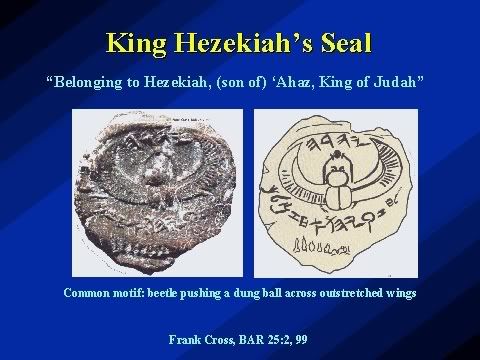 Hezekiah's Seal A careful study of the Biblical text reveals the increasing tensions between Egypt and Assyria, with Jerusalem caught in the middle and Assyria gaining the ascendancy. The old religion was essentially Egyptian and was an embarrassment in trying to appease those seen as the most likely victors, the Assyrians. According to Finkelstein & Silberman (op.cit., p.11): The first question was whether Moses could really have been the author of the Five Books of Moses, since the last book, Deuteronomy, described in great detail the precise time and circumstances of Moses' own death. Other incongruities soon became apparent: the biblical text was filled with literary asides, explaining the ancient names of certain places and frequently noting that the evidence of famous biblical events were still visible "to this day." These factors convinced some seventeenth century scholars that the Bible's first five books, at least, had been shaped, expanded, and embellished by later, anonymous editors and revisers over the centuries. Thus, such questions had been circulating well before the formation of the premier grand lodge. Sources:Finkelstein, Israel & Silberman Neil Asher, 2002, The Bible Unearthed: Archaelogy’s New Vision of Ancient Israel and the Origin of its Sacred Texts, Touchstone, New York Patai, Raphael, 1990, The Hebrew Goddess, (3rd enlarged edition), Wayne State University Press, Detroit |
|
|
|
Post by Tamrin on Jul 14, 2008 7:06:10 GMT 10
Biblical selectionsGenesis 21:33 And Abraham planted a grove [ashera] in Beersheba, and called there on the name of the Lord, the everlasting God. Judges 6:25 And it came to pass the same night, that the Lord said unto him [Gideon], Take thy father's young bullock, even the second bullock of seven years old, and throw down the altar of Baal that thy father hath, and cut down the grove that is by it: I Kings 14:23 For they also built them high places, and images, and groves [asherim], on every high hill, and under every green tree. Ancient Brethren Meeting on High Hills and in Low Vales
(Sectional Lectures) I Kings 14:24 And there were also sodomites [kadoshim = "holy ones"] in the land: and they did according to all the abominations of the nations which the Lord cast out before the children of Israel. I Kings 16:33 And Ahab made a grove [ashera]; and Ahab did more to provoke the Lord God of Israel to anger than all the kings of Israel that were before him. I Kings 21:24 Him that dieth of Ahab in the city the dogs shall eat; and him that dieth in the field shall the fowls of the air eat. I Kings 18:40 And Elijah said unto them, Take the prophets of Baal; let not one of them escape. And they took them: and Elijah brought them down to the brook Kishon [Kidron], and slew them there. Elijah slaughters the prophets of Baal II Kings 18:4 He removed the high places, and brake the images, and cut down the groves [asherim], and brake in pieces the brazen serpent that Moses had made: for unto those days the children of Israel did burn incense to it: and he called it Nehushtan. II Kings 21:7 And he set a graven image of the grove [Asherah] that he had made in the house, of which the Lord said to David, and to Solomon his son, In this house, and in Jerusalem, which I have chosen out of all tribes of Israel, will I put my name for ever [Compare: " In strength will I establish this mine house that it stand fast forever."] II Kings 23:4 And the king commanded Hilkiah the high priest, and the priests of the second order, and the keepers of the door, to bring forth out of the temple of the Lord all the vessels that were made for Baal [not a proper name but a title, meaning "the Lord"], and for the grove [Asherah], and for all the host of heaven: and he burned them without Jerusalem in the fields of Kidron, and carried the ashes of them unto Bethel. II Kings 23:5 And he put down the idolatrous priests, whom the kings of Judah had ordained to burn incense in the high places in the cities of Judah, and in the places round about Jerusalem; them also that burned incense unto Baal [the Lord], to the sun, and to the moon, and to the planets, and to all the host of heaven. II Kings 23:6 And he brought out the grove [ashera] from the house of the Lord, without Jerusalem, unto the brook Kidron, and burned it at the brook Kidron, and stamped it small to powder, and cast the powder thereof upon the graves of the children of the people. II Kings 23:7 And he brake down the houses of the sodomites [kadoshim = "holy ones'], that were by the house of the Lord, where the women wove hangings for the grove [ashera]. The Women Wove Hangings for the Grove II Kings 23:8 And he brought all the priests out of the cities of Judah, and defiled the high places where the priests had burned incense, from Geba to Beersheba, and brake down the high places of the gates that were in the entering in of the gate of Joshua the governor of the city, which were on a man's left hand at the gate of the city. II Kings 23:9 Nevertheless the priests of the high places came not up to the altar of the Lord in Jerusalem, but they did eat of the unleavened bread among their brethren. II Kings 23:20 And he slew all the priests of the high places that were there upon the altars, and burned men's bones upon them, and returned to Jerusalem. II Chronicles 33:7 And he set a carved image, the idol which he had made, in the house of God, of which God had said to David and to Solomon his son, In this house, and in Jerusalem, which I have chosen before all the tribes of Israel, will I put my name for ever Solomon's Idolatry, Frans Francken II, Flemish, 1622 Psalms 144:12 That our sons may be as plants grown up in their youth; that our daughters may be as corner stones, polished after the similitude of a palace [or temple] Isaiah 40:19 The workman melteth a graven image, and the goldsmith spreadeth it over with gold, and casteth silver chains. Isaiah 40:20 He that is so impoverished that he hath no oblation chooseth a tree that will not rot; he seeketh unto him a cunning workman to prepare a graven image, that shall not be moved. Isaiah 41:2/7, soon after asking the significant question, ‘ Who raised up the righteous man from the east…?’: They helped every one his neighbor; and everyone said to his brother, Be of good courage. So the carpenter encouraged the goldsmith, and he that smootheth with the hammer him that smote the anvil, saying, It is ready for the sodering; and he fastened it with nails, that it should not be moved. [compare Jeremiah 10:3/5] Gideon destroying an "ashera"
Judges 6:25 Jeremiah 44:17 But we will certainly do whatsoever thing goeth forth out of our own mouth, to burn incense unto the queen of heaven, and to pour out drink offerings unto her, as we have done, we, and our fathers, our kings, and our princes, in the cities of Judah, and in the streets of Jerusalem: for then had we plenty of victuals, and were well, and saw no evil. Jeremiah 44:18 But since we left off to burn incense to the queen of heaven, and to pour out drink offerings unto her, we have wanted all things, and have been consumed by the sword and by the famine. Jeremiah 44:19 And when we burned incense to the queen of heaven, and poured out drink offerings unto her, did we make her cakes to worship her, and pour out drink offerings unto her, without our men? Matthew 12:42 & Luke 11:31 The queen of the south shall rise up in the judgment with this generation, and shall condemn it: for she came from the uttermost parts of the earth to hear the wisdom of Solomon; and, behold, a greater than Solomon is here. Acts 8:27 And he [Philip] arose and went: and, behold, a man of Ethiopia, an eunuch of great authority under Candace queen of the Ethiopians, who had the charge of all her treasure, and had come to Jerusalem for to worship. The Feud Continues Please see: Asherah - The Christmas Tree Custom
|
|
|
|
Post by Tamrin on Jul 14, 2008 7:06:46 GMT 10
Asherah's essential features appears to have been preserved within the veiled teachings of Judaism, the Kabbalah, and, similarly, in Jesus and the Lost Goddess, Freke and Gandy demonstrate she featured in the early Church (please bear-in-mind that, just as Asherah was represented by a "pillar", "Magdalene" means "tower," an appropriate simile). Indeed, the veneration of the Cross may have more to do with its approximation of the Tree of Life (particularly in context with the other two crosses of Golgotha, representing the outer pillars; in context with the brazen serpent of Moses, representing resurrection; and in context with the medieval Golden Legend, in which wood from the Tree of Life came to be used to make the 'True Cross') than with some macabre celebration of it as an instrument of torture. |
|
|
|
Post by Tamrin on Jul 14, 2008 7:07:28 GMT 10
Ba'alAlthough Asherah was said to have been the mother of the gods, she was often depicted as the consort of Ba'al. "Ba'al" however is not a proper name but a title, meaning "Lord." In denouncing the cult of Asherah, the biblical writers resorted to smoke and mirrors to distort her and her worship. One method was associating her with Ba’al, rather than with El, Yahweh or Jehovah. On the one hand, we find there was originally no distinction between Ba’al and Yahweh. The following entry from the Temple Dictionary of the Bible (Ewing & Thomson, pp.42/3, some words originally abbreviated have been completed), reads: BAAL, plural BALIM, the supreme male deity of the Shemites; probably originally bisexual – the progress of anthropomorphism naturally involving the ascription of sex. Baal means ‘Lord,’ ‘possessor’; therefore Baal is an attributive, not a proper name. At first Baal and Jehovah were identical, hence Saul and David had sons whose names had Baal as a constitutive element (I Chr. 8.33, 9.39, 14.7). Gradually it was recognised that the connotation was so different that it was simpler to regard them as different beings. One point of difference was that Baal was worshiped by images, while Jehovah was not. On the other hand, "Yahweh" was a designation used elsewhere in among Phoenicians, as with Yehaw-milk or King Yahweh of Byblos, who has been depicted making offerings to Hathor, (whose iconography and identity merged with that of Isis and thus with those of Asherah). Remembering that Jerusalem was part of the Egyptian province of Retjenu, the most obvious "Lord" would have been Pharaoh, a "living god." Indeed, in life he was a theophany of Horus; in death, Osiris; and, as he begat his heir, Amun (another " unseen god," like YHWH) Indeed, we find the usual representations of Ba'al resemble classic depictions of Pharaoh, complete with pharaonic crown, in a conventional pose "smiting his enemies" (top row images of Ba'al, bottom row images of Pharaohs and, significantly, a Candace).
|
|
|
|
Post by Tamrin on Jul 14, 2008 7:10:05 GMT 10
The legend of Pygmalion (Pumiyathon) and Galatea recounts the requirement of the Levantine kings elect, (Pumiyathon was a royal Phoenician name), to sculpt or commission and ritually marry a statue of the goddess, of whose cult he was to be the priest-king. The sacred marriage, or heiros gammos, was then consummated with the cult’s high priestess (Ward, p.38). Hiram, King of Tyre, and Solomon, King of Israel, would have also undergone the same rite ( Pharaoh's daughter, 1 Kings 3:1, the Queen of Sheba, 1 Kings 10:1/13, or his " Shulamite," Song of Songs 6:13, come to mind). Ward, J.S.M., n.d., Who Was Hiram Abiff?, The Baskerville Press, London Pygmalion as a sculptor in stone. |
|
|
|
Post by Tamrin on Jul 14, 2008 7:10:44 GMT 10
Lions were theophanies of both Asherah and Cybele(who was commonly depicted in a chariot drawn by lions) |
|
|
|
Post by Tamrin on Jul 14, 2008 7:11:23 GMT 10
The priests and priestesses of Asherah were designated respectively as the "Kadosh" and the "Kadoshah", meaning "holy," although these have been translated as "sodomites" and "prostitutes". The later Masonic group designated as "Kadosh" (also of French origin), in the ne plus ultra degree, prefer the former meaning in reference to themselves. The name "Kadosh" was especially associated with Asherah. The Goddess Isis had been revered as Asherah in Egypt's province of Retjenu. Eventually, at a time when Egypt was seeking to retain its sphere of influence, to counter Assyria's rising power, Levantine variations of Asherah's worship came to be acknowledged back in Egypt, where she was received as the goddess Kadosh or Qadesh. |
|




